-
 Bitcoin
Bitcoin $106,437.2012
0.82% -
 Ethereum
Ethereum $2,442.5287
0.82% -
 Tether USDt
Tether USDt $1.0005
-0.02% -
 XRP
XRP $2.1812
-0.27% -
 BNB
BNB $645.1327
0.45% -
 Solana
Solana $146.2379
0.39% -
 USDC
USDC $0.9999
-0.01% -
 TRON
TRON $0.2751
0.92% -
 Dogecoin
Dogecoin $0.1662
-0.23% -
 Cardano
Cardano $0.5827
-1.22% -
 Hyperliquid
Hyperliquid $37.5225
0.04% -
 Bitcoin Cash
Bitcoin Cash $479.0877
4.02% -
 Sui
Sui $2.7846
-3.27% -
 Chainlink
Chainlink $13.3576
0.84% -
 UNUS SED LEO
UNUS SED LEO $9.0252
-1.20% -
 Stellar
Stellar $0.2455
-1.07% -
 Avalanche
Avalanche $18.0680
-1.81% -
 Toncoin
Toncoin $2.8948
-1.07% -
 Shiba Inu
Shiba Inu $0.0...01164
-1.65% -
 Litecoin
Litecoin $85.0637
-0.06% -
 Hedera
Hedera $0.1526
-0.89% -
 Monero
Monero $316.2941
0.78% -
 Ethena USDe
Ethena USDe $1.0003
-0.04% -
 Polkadot
Polkadot $3.4113
-1.87% -
 Dai
Dai $1.0000
-0.01% -
 Bitget Token
Bitget Token $4.4488
5.16% -
 Uniswap
Uniswap $7.1740
3.09% -
 Pi
Pi $0.5968
11.43% -
 Pepe
Pepe $0.0...01010
-0.65% -
 Aave
Aave $264.3189
0.40%
What does it mean when the upper and lower tracks of the Bollinger Bands are flat at the same time and then suddenly expand?
When Bollinger Bands flatten and then expand, it signals low volatility followed by a potential breakout, offering traders strategic entry or exit points in crypto markets.
Jun 25, 2025 at 10:57 am
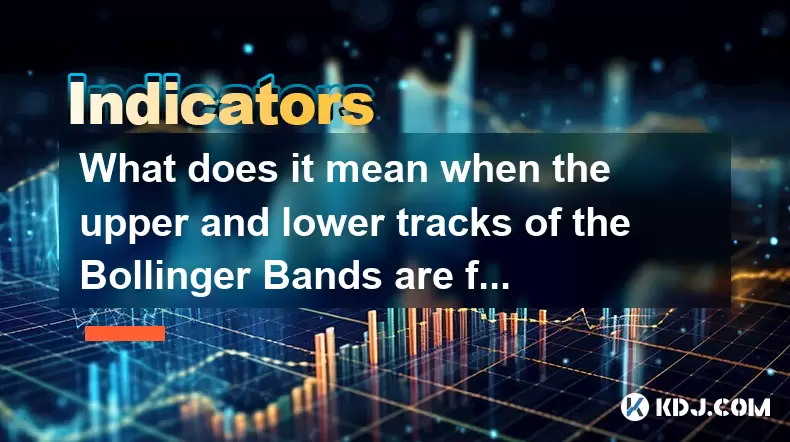
Understanding Bollinger Bands in Cryptocurrency Trading
Bollinger Bands are a widely used technical analysis tool in the cryptocurrency market. Developed by John Bollinger, they consist of three lines: a simple moving average (SMA) in the middle and two standard deviation bands above and below it. These bands dynamically adjust to price volatility. In crypto trading, where price swings are common, understanding the behavior of Bollinger Bands is crucial for identifying potential trends, reversals, or breakouts.
The upper band indicates overbought conditions, while the lower band reflects oversold levels. When prices move toward either band, traders often interpret this as a sign of strength or weakness in the current trend. However, when both bands flatten simultaneously before expanding, it signals a unique market condition that can offer strategic entry or exit points.
What Does It Mean When Both Bollinger Bands Are Flat?
When the upper and lower tracks of the Bollinger Bands appear flat at the same time, it typically means that the asset is experiencing low volatility. This phenomenon is commonly referred to as a "squeeze" or "volatility contraction."
- During this phase, price movement is confined within a narrow range, indicating that buyers and sellers are in equilibrium.
- This consolidation period may precede a significant price breakout in either direction, depending on how the market reacts to external news or volume surges.
In the context of cryptocurrencies like Bitcoin or Ethereum, such flatness might occur during periods of market indecision or before major events such as halvings, regulatory announcements, or macroeconomic shifts.
Why Do Bollinger Bands Suddenly Expand After Being Flat?
After a period of contraction, when the Bollinger Bands suddenly expand outward, it signifies an increase in volatility. This expansion is known as a "volatility breakout."
- The sudden widening of the bands indicates that the price is moving rapidly, breaking out of its previous consolidation pattern.
- Such expansions often coincide with increased trading volume, confirming the strength of the breakout.
For instance, if a cryptocurrency has been trading sideways for several hours and then experiences a sharp upward or downward move due to a whale transaction or breaking news, the Bollinger Bands will respond by expanding quickly to reflect the new volatility level.
How to Interpret This Pattern in Crypto Charts
Traders use the flat-to-expanding Bollinger Bands pattern to anticipate directional moves. Here’s how to interpret it:
- Flat bands suggest a coiled spring ready to release energy — meaning a strong move is likely imminent.
- Once the bands start expanding, traders look for confirmation via candlestick patterns or volume spikes to determine the breakout direction.
For example, on a 4-hour chart of BTC/USDT, if you observe the bands flattening for several candles followed by a large green candle breaking above resistance, it could indicate a bullish breakout. Conversely, a red candle breaking key support would signal a bearish move.
How to Trade This Signal in Cryptocurrency Markets
Trading the Bollinger Band squeeze and subsequent expansion involves specific steps:
- Identify the flat bands across multiple timeframes to confirm the consolidation phase.
- Monitor volume indicators like On-Balance Volume (OBV) or Volume Weighted Average Price (VWAP) to detect early signs of a breakout.
- Wait for a confirmed breakout beyond the upper or lower band before entering a trade.
- Set stop-loss orders just below the recent swing low (for long trades) or above the swing high (for short trades).
- Use trailing stops or take-profit targets based on historical volatility ranges to manage risk effectively.
It's important to combine this strategy with other tools like RSI or MACD to filter false signals and enhance accuracy.
Frequently Asked Questions
Q1: Can Bollinger Bands be used alone to make trading decisions?
While Bollinger Bands provide valuable insights into volatility and potential breakouts, relying solely on them may lead to inaccurate signals. It's best to use them alongside other indicators like volume, RSI, or support/resistance levels for better accuracy.
Q2: How reliable is the Bollinger Band "squeeze" in predicting price movements?
The reliability depends on the timeframe and market conditions. The longer the consolidation period, the stronger the potential breakout. However, not every squeeze leads to a meaningful move, especially in highly volatile or illiquid markets.
Q3: What timeframes work best for observing flat-to-expanding Bollinger Bands in crypto?
Intermediate timeframes like 1-hour or 4-hour charts are ideal for spotting these patterns. Shorter timeframes (like 5-minute charts) may generate too many false signals, while daily charts might miss timely entries.
Q4: Is the Bollinger Band expansion always followed by a trend continuation?
No. Sometimes, the expansion marks the end of a trend rather than its continuation. For example, a sharp band expansion after a prolonged uptrend could indicate exhaustion and an impending reversal. Always verify with additional technical indicators.
Disclaimer:info@kdj.com
The information provided is not trading advice. kdj.com does not assume any responsibility for any investments made based on the information provided in this article. Cryptocurrencies are highly volatile and it is highly recommended that you invest with caution after thorough research!
If you believe that the content used on this website infringes your copyright, please contact us immediately (info@kdj.com) and we will delete it promptly.
- Shiba Inu, Dogecoin, and Meme Coins: What's the Hype in 2025?
- 2025-06-25 16:25:12
- JasmyCoin's Wild Ride: 6x Setup or Just a Mirage?
- 2025-06-25 16:25:12
- Mastercard's Stablecoin Integration: Revolutionizing On-Chain Commerce, NY Style
- 2025-06-25 16:45:12
- Malaysia's Cash Conundrum: When Coin Refusal Sparks Debate
- 2025-06-25 16:45:12
- Truth Social, Bitcoin ETF, Ethereum ETF: Trump Media's Crypto Play
- 2025-06-25 17:05:13
- Syrup Price Surges as Maple Finance AUM and Revenue Skyrocket: A Deep Dive
- 2025-06-25 17:25:13
Related knowledge
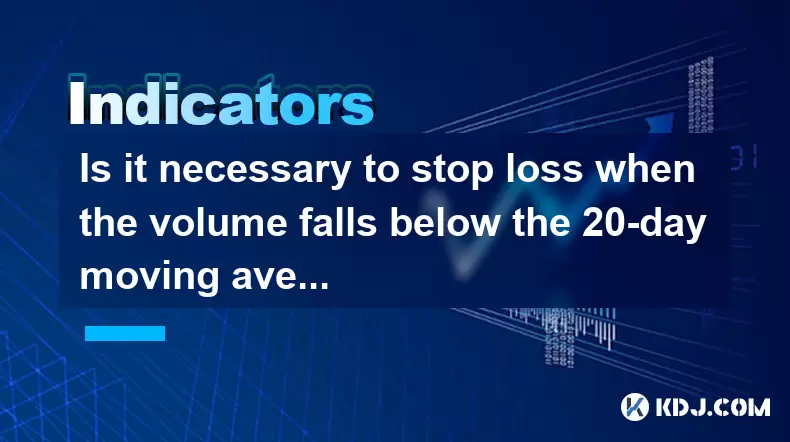
Is it necessary to stop loss when the volume falls below the 20-day moving average?
Jun 25,2025 at 05:00pm
Understanding the 20-Day Moving Average in Cryptocurrency TradingIn cryptocurrency trading, technical analysis plays a pivotal role in decision-making. One of the most commonly used indicators is the 20-day moving average (MA). This metric calculates the average price of an asset over the past 20 days and helps traders identify trends and potential reve...
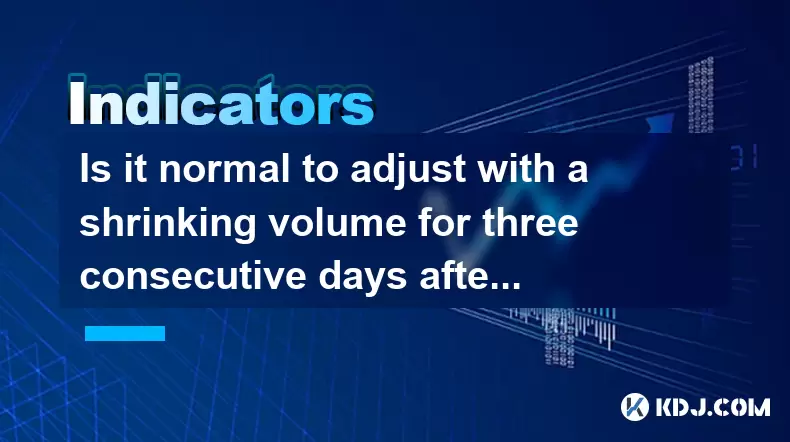
Is it normal to adjust with a shrinking volume for three consecutive days after breaking through the previous high with a large volume?
Jun 25,2025 at 03:49pm
Understanding Volume and Price Relationship in Cryptocurrency TradingIn cryptocurrency markets, volume is a critical metric that reflects the number of assets traded over a specific period. When a cryptocurrency breaks through a previous high with large volume, it typically signals strong buying pressure and market confidence. However, it's not uncommon...
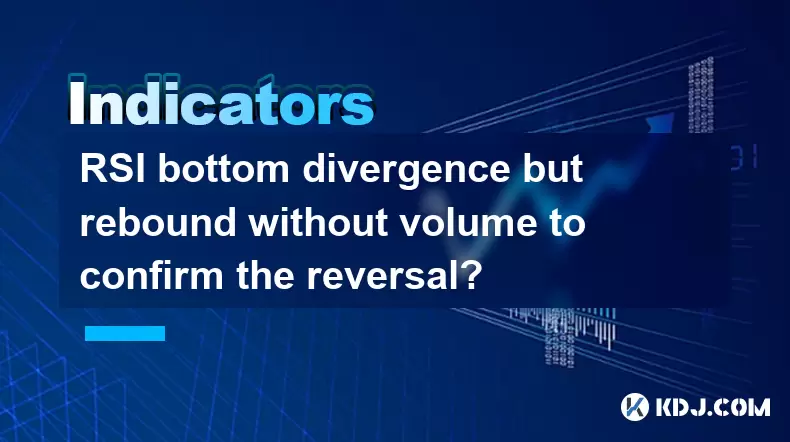
RSI bottom divergence but rebound without volume to confirm the reversal?
Jun 25,2025 at 04:42pm
Understanding RSI Bottom DivergenceRelative Strength Index (RSI) is a momentum oscillator used in technical analysis to measure the speed and change of price movements. RSI bottom divergence occurs when the price of an asset makes a new low, but the RSI does not confirm that low and instead forms a higher low. This pattern suggests weakening downward mo...
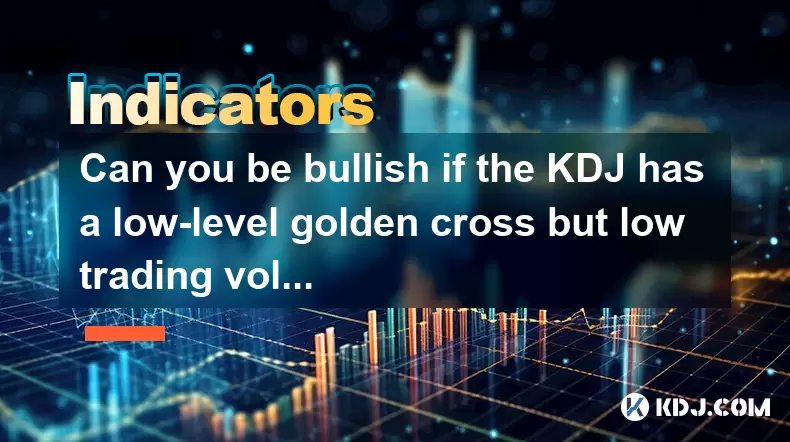
Can you be bullish if the KDJ has a low-level golden cross but low trading volume?
Jun 25,2025 at 03:14pm
Understanding the KDJ Indicator in Cryptocurrency TradingThe KDJ indicator, also known as the stochastic oscillator, is a momentum-based technical analysis tool widely used in cryptocurrency trading. It comprises three lines: the %K line (fast stochastic), the %D line (slow stochastic), and the J line (divergence value). These lines oscillate between 0 ...
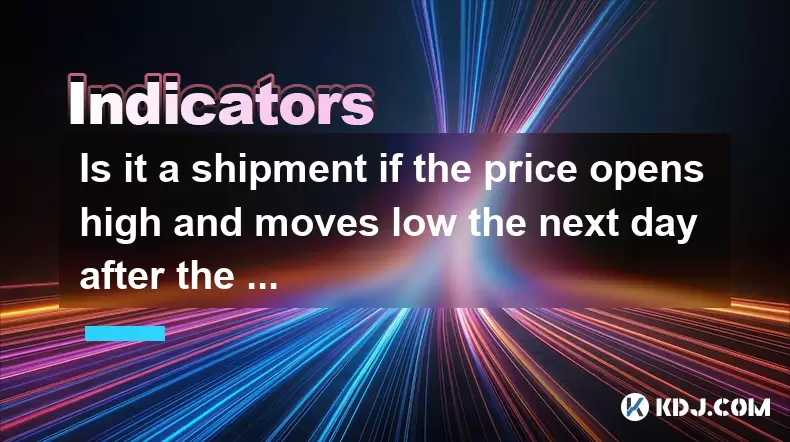
Is it a shipment if the price opens high and moves low the next day after the daily limit with huge volume?
Jun 25,2025 at 12:56pm
Understanding the Concept of a Shipment in Cryptocurrency TradingIn cryptocurrency trading, the term shipment refers to a scenario where large volumes of an asset are sold off rapidly, often leading to a significant price drop. This is typically associated with whale activity or coordinated selling by major holders. When traders observe certain patterns...
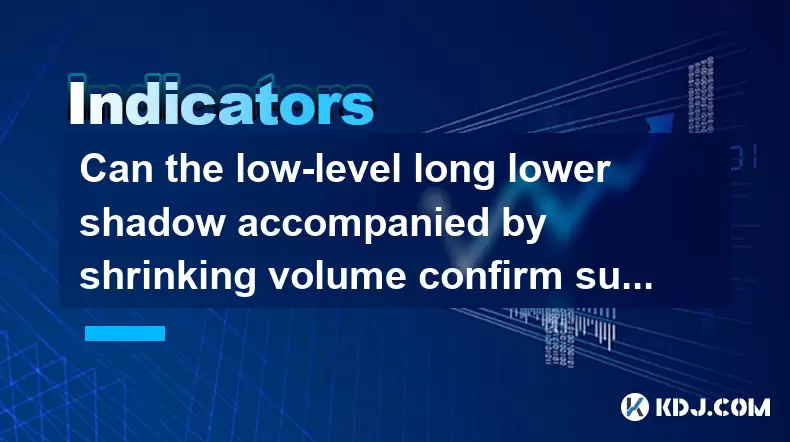
Can the low-level long lower shadow accompanied by shrinking volume confirm support?
Jun 25,2025 at 03:08pm
Understanding the Long Lower Shadow Candlestick PatternA long lower shadow candlestick pattern occurs when a candle closes near its high but has a significantly long lower wick, indicating that sellers pushed prices down during the session but were met with strong buying pressure that drove the price back up. This pattern is often seen as a potential si...

Is it necessary to stop loss when the volume falls below the 20-day moving average?
Jun 25,2025 at 05:00pm
Understanding the 20-Day Moving Average in Cryptocurrency TradingIn cryptocurrency trading, technical analysis plays a pivotal role in decision-making. One of the most commonly used indicators is the 20-day moving average (MA). This metric calculates the average price of an asset over the past 20 days and helps traders identify trends and potential reve...

Is it normal to adjust with a shrinking volume for three consecutive days after breaking through the previous high with a large volume?
Jun 25,2025 at 03:49pm
Understanding Volume and Price Relationship in Cryptocurrency TradingIn cryptocurrency markets, volume is a critical metric that reflects the number of assets traded over a specific period. When a cryptocurrency breaks through a previous high with large volume, it typically signals strong buying pressure and market confidence. However, it's not uncommon...

RSI bottom divergence but rebound without volume to confirm the reversal?
Jun 25,2025 at 04:42pm
Understanding RSI Bottom DivergenceRelative Strength Index (RSI) is a momentum oscillator used in technical analysis to measure the speed and change of price movements. RSI bottom divergence occurs when the price of an asset makes a new low, but the RSI does not confirm that low and instead forms a higher low. This pattern suggests weakening downward mo...

Can you be bullish if the KDJ has a low-level golden cross but low trading volume?
Jun 25,2025 at 03:14pm
Understanding the KDJ Indicator in Cryptocurrency TradingThe KDJ indicator, also known as the stochastic oscillator, is a momentum-based technical analysis tool widely used in cryptocurrency trading. It comprises three lines: the %K line (fast stochastic), the %D line (slow stochastic), and the J line (divergence value). These lines oscillate between 0 ...

Is it a shipment if the price opens high and moves low the next day after the daily limit with huge volume?
Jun 25,2025 at 12:56pm
Understanding the Concept of a Shipment in Cryptocurrency TradingIn cryptocurrency trading, the term shipment refers to a scenario where large volumes of an asset are sold off rapidly, often leading to a significant price drop. This is typically associated with whale activity or coordinated selling by major holders. When traders observe certain patterns...

Can the low-level long lower shadow accompanied by shrinking volume confirm support?
Jun 25,2025 at 03:08pm
Understanding the Long Lower Shadow Candlestick PatternA long lower shadow candlestick pattern occurs when a candle closes near its high but has a significantly long lower wick, indicating that sellers pushed prices down during the session but were met with strong buying pressure that drove the price back up. This pattern is often seen as a potential si...
See all articles























































































